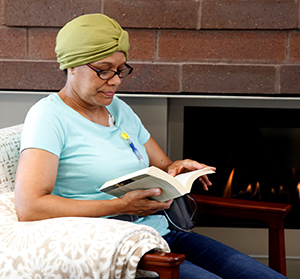A
B
C
D
E
F
G
H
I
J
K
L
M
N
O
P
Q
R
S
T
U
V
W
X
Y
Z
Click a letter to see a list of conditions beginning with that letter.
Click 'Topic Index' to return to the index for the current topic.
Click 'Library Index' to return to the listing of all topics.
Home Infusion Therapy
Infusion therapy is a safe way to take medicines or fluids that can’t be taken by mouth. Instead, they flow by IV (intravenous) line through a soft, flexible tube (catheter) that’s placed in a vein. This is usually done in your arm or chest. It is called the infusion site.

Advantages of home therapy
Home infusion therapy lets you live a more normal life by having therapy at home. This way you don't need to travel to a hospital or an infusion clinic for treatment. An infusion nurse comes to your home to give you treatment. The nurse can sometimes teach a family member or friend to give you the medicine. They can show them how to disconnect the IV line when the therapy is done. Home therapy also costs less than treatment in a hospital or clinic. The risk of infection can be low with the correct care.
Your role
With home therapy, you take an active role in your treatment. A home healthcare company brings your supplies, and a nurse shows you what to do. You need to know these things:
When to call the nurse
Call the nurse if you have any of these problems:
-
There is redness, swelling, warmth, fluid leaking, or pain around the infusion site.
-
Your temperature is higher than normal or higher than the level taught to you by the nurse. Or you have chills.
-
You have swelling in your chest, arm, or neck. Fluid may be leaking into the tissue.
-
The catheter or tubing comes out.
Turn off the system and call the nurse if:
-
The pole falls over and something breaks. Or you have a problem putting the pole upright and restarting the system.
-
The solution isn’t running smoothly through the tubing.
-
There is a tear or leak in the tubing or the catheter.
-
The alarm on the pump comes on.
Call 911
Call 911 right away if you have signs of allergic reaction, such as:
-
Itching
-
Shortness of breath
-
Hives
-
Dizzy feeling
Online Medical Reviewer:
Marianne Fraser MSN RN
Online Medical Reviewer:
Rita Sather RN
Online Medical Reviewer:
Susan K. Dempsey-Walls RN
Date Last Reviewed:
11/1/2023
© 2000-2024 The StayWell Company, LLC. All rights reserved. This information is not intended as a substitute for professional medical care. Always follow your healthcare professional's instructions.